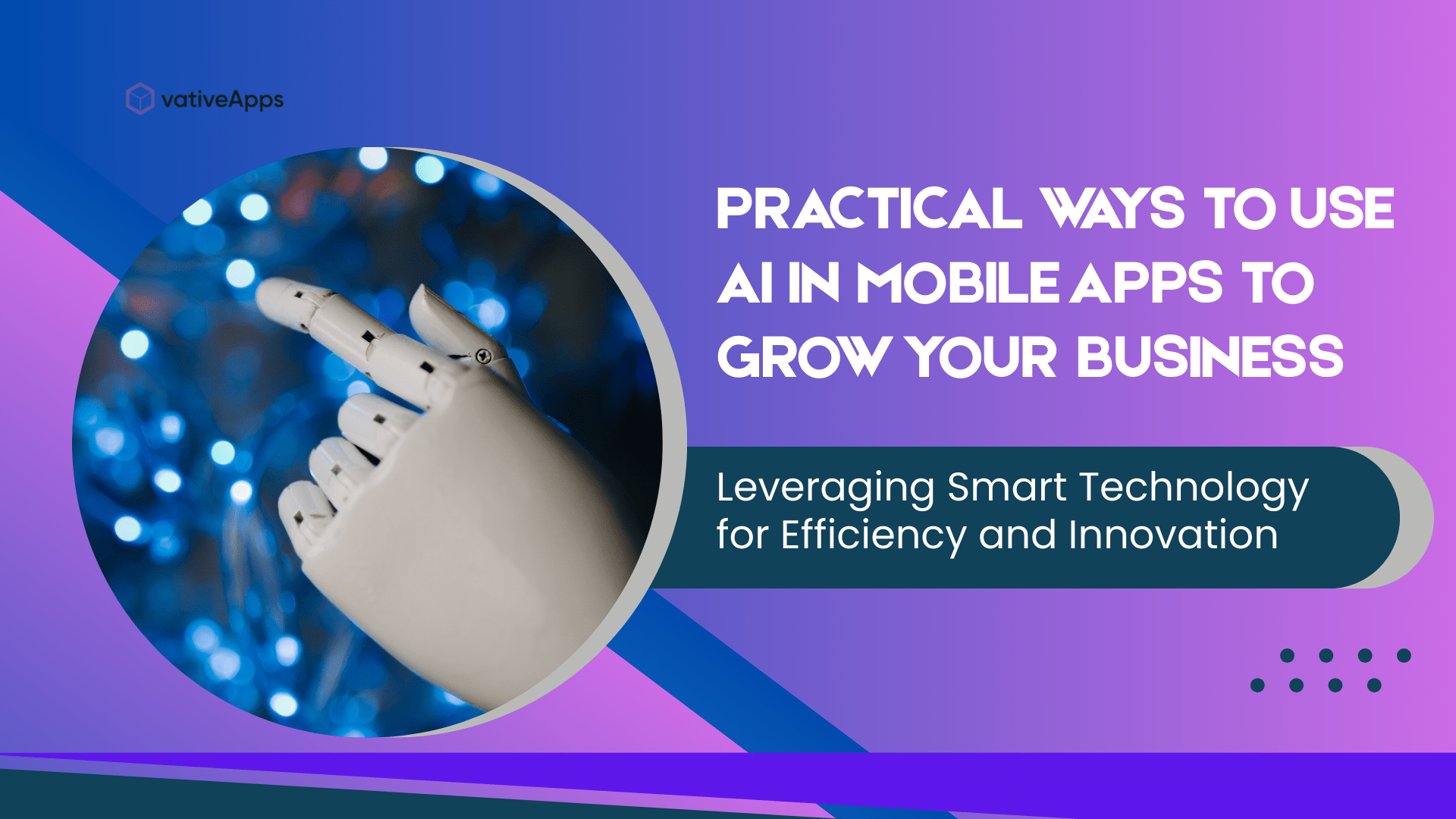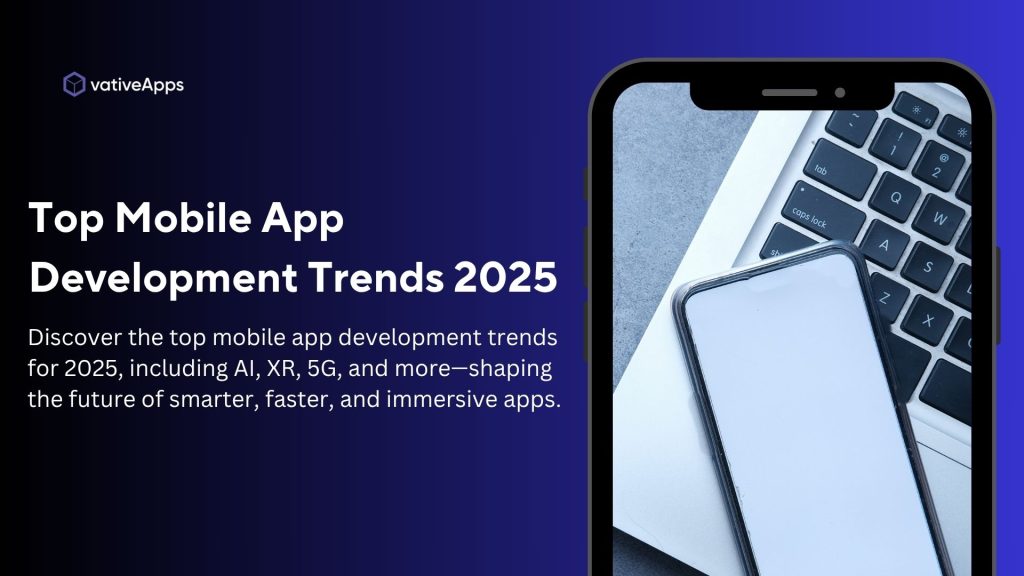
Discover the technologies redefining mobile experiences worldwide
The year 2025 will be a turning point in the creation of mobile apps, bringing with it new standards for usability, design, and functionality. The competition is intense, but so is the opportunity, given the billions of consumers globally and the anticipated revenue reaching all-time highs.
There is a greater need than ever for mobile apps that are more intelligent, quick, and customized as mobile devices continue to develop into essential tools. To stay ahead of the curve, developers, entrepreneurs, and company executives need to embrace new technologies that are redefining user experience and engagement.
At vativeApps, we constantly monitor emerging trends to assist our clients in maintaining their competitiveness. In 2025, you should keep an eye on these ten innovative trends in mobile app development:
Top 5 Innovative Trends in Mobile App Development 2025
Thanks to emerging technologies and shifting consumer expectations, the mobile app market is moving quickly. In 2025, innovation will be the norm, with AI, motion design, XR, and 5G revolutionizing the way we create, use, and engage with applications. This list focuses on the top five trends that will influence mobile app development in the future and pave the way for more immersive, individualized, and user-friendly digital experiences.
- AI-Powered App Intelligence
Machine learning (ML) and artificial intelligence (AI) are not just futuristic ideas; rather, they are now the cornerstones of refined, highly effective mobile applications. Apps are becoming more flexible and context-aware thanks to these technologies, which also allow them to move beyond static functionality.
Apps with AI capabilities now are able to rapidly provide insights, handle enormous volumes of real-time data, and evaluate user behavior. AI is changing how people interact with apps, from smart picture and voice recognition to chatbots and intelligent suggestions.
Why Does AI Matters in 2025?
AI will play a central role in delivering hyper-personalized experiences in 2025. AI will also streamline app performance by automating backend processes, enhancing customer support, and minimizing human error. Apps will be expected to anticipate what users need before they ask whether it is a shopping suggestion, content curation, or health insights. Developers who fail to integrate AI into their apps risk falling behind in both user experience and competitive value.
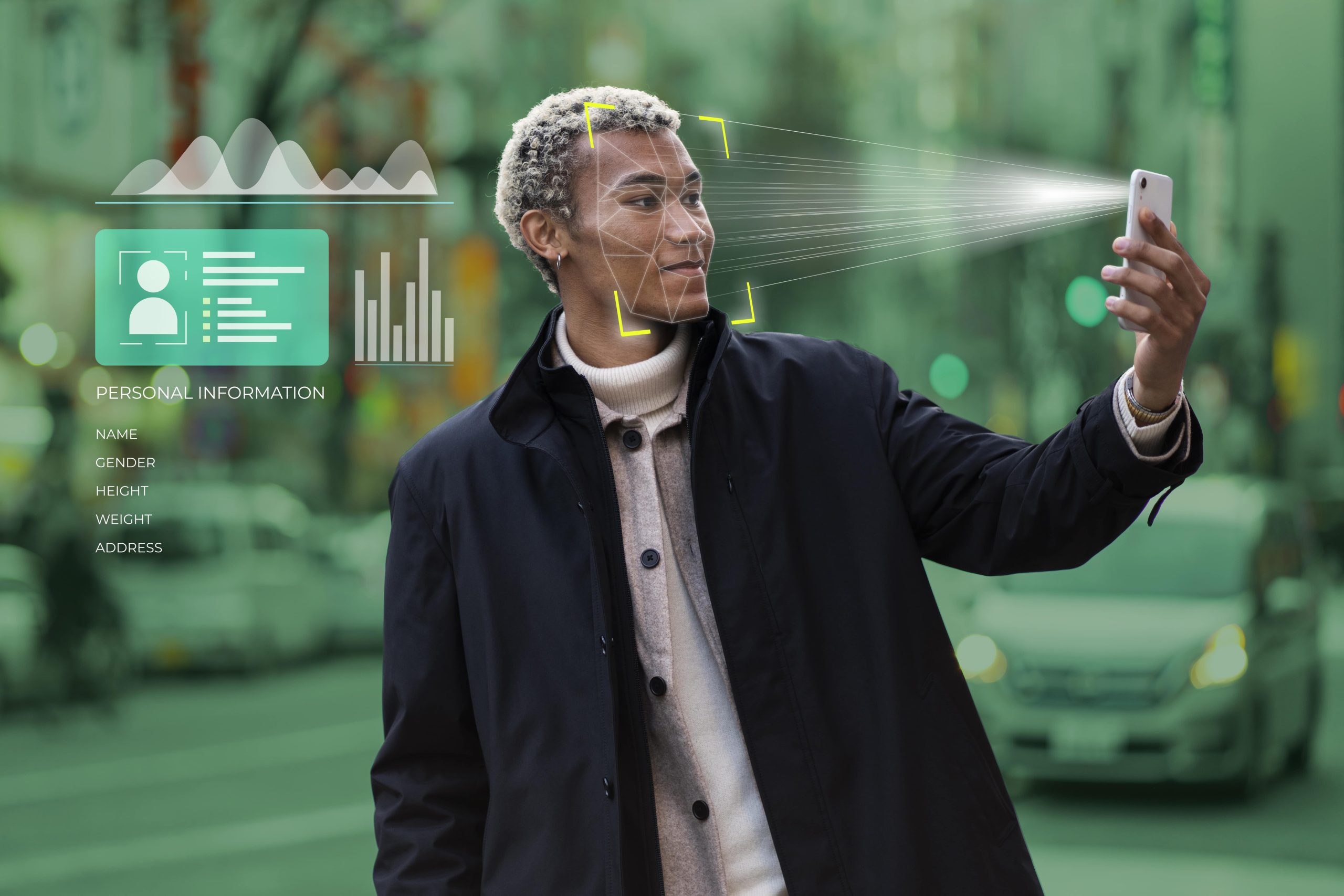
Examples of Impact:
- Netflix recommending shows based on viewing history
- Google Maps adjusting routes using real-time traffic prediction
- Fitness apps offering personalized coaching based on user progress and habits
As AI capabilities grow, it will be impossible to separate smart functionality from successful app development.
- Motion Design for Immersive UI/UX
Motion design helps users easily grasp the app’s flow through animated transitions, micro-interactions, loading animations, gesture feedback, and contextual visual cues. The experience feels smoother and more professional because of these delicate animations that provide responsiveness and continuity.
Motion design has become a crucial component of contemporary UI/UX as users want more captivating and user-friendly digital experiences. Creating intentional movement that directs users, improves usability, and gives interfaces life is the focus of this approach, which goes far beyond flashy animations.
Why it matters in 2025:
Motion design helps to differentiate your app where in a world user attention spans are short and competition is high. It provides users with real time value feedback, making navigation easier and more enjoyable. Motion also easily communicates functionality without relying on lengthy text, which improves accessibility and reduces cognitive load.
Examples of impact:
- A button that ripples when tapped, signaling successful interaction.
- Animated progress bars that visually show task completion.
- Gesture-based transitions that help users feel in control of navigation.
- Educational animations that onboard users effectively without overwhelming them.
As mobile screens get more advanced and interaction models evolve, motion design will be essential in creating emotionally engaging, user-friendly apps. It’s not just decoration—it’s a key part of how users understand and enjoy your product.
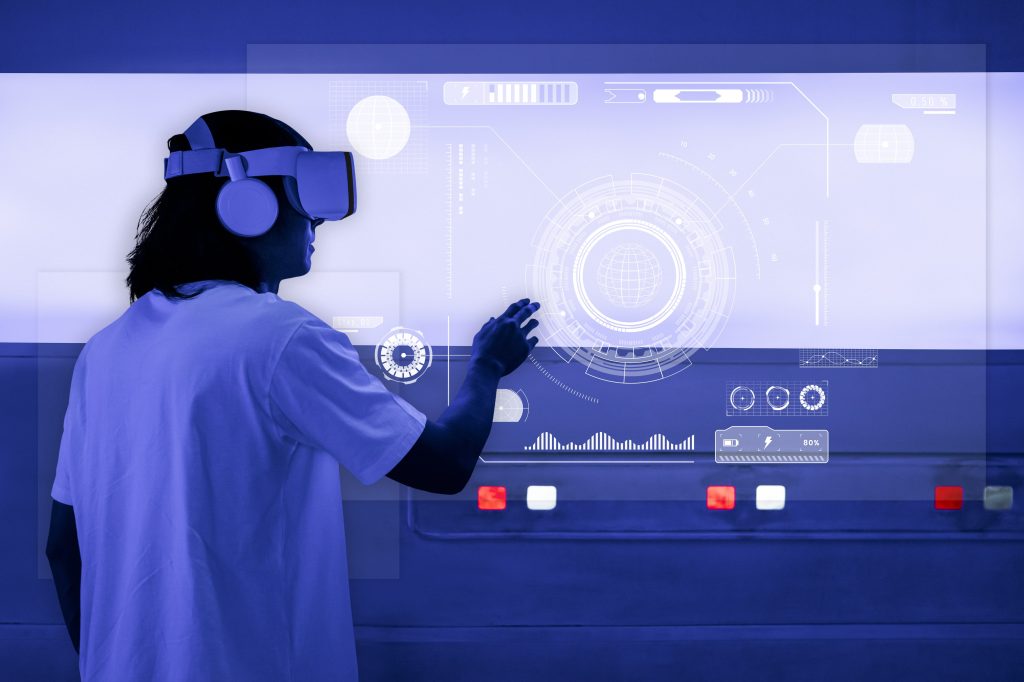
- Touchless and Voice-First Interfaces
Touchless and voice-first interfaces are becoming integral to mobile app design as user expectations shift toward greater convenience and accessibility. These 2 technologies allow users to interact with apps without tapping or typing through voice commands, facial recognition, gestures, or even eye tracking.
During the pandemic, touchless user interface (UI) gained popularity for hygienic reasons, but it has since developed into a necessity for accessibility and efficiency. Whether at home, in the vehicle, or on the go, voice-activated navigation in particular is revolutionizing how people do hands-free tasks, look up content, and operate devices.
Why it matters in 2025:
Voice assistants are becoming more accurate and conversational with advancements in Natural Language Processing (NLP). Simultaneously, without the need for physical contact, facial recognition and gesture-based interactions are providing smooth identification, unlocking, and navigation. In sectors like healthcare (hands-free access to patient data), retail (contactless payments), and productivity tools (voice-controlled task managers), these interfaces have a particularly significant influence.
Examples of impact:
- Users dictating messages or commands to virtual assistants like Siri, Google Assistant, or Alexa.
- Facial recognition for secure logins in financial and enterprise apps.
- Gesture control in fitness or AR-based apps to switch views or interact with the environment.
- Voice-enabled interfaces in smart homes and IoT-based mobile apps.
As these technologies become more refined and widely adopted, they will define a new standard in user interaction—one that is faster, more intuitive, and inclusive.
- Low-Code and No-Code App Development
These platforms are revolutionizing mobile app development by making it more accessible to non-technical users (no-code) and dramatically speeding up workflows for professional developers (low-code). Business teams, marketers, product managers, and even startups with limited technical resources can now bring their ideas to life without needing a full-fledged engineering team.
The demand for rapid digital transformation has paved the way for low-code and no-code platforms—development frameworks that allow users to create applications through visual interfaces, drag-and-drop components, and pre-built modules instead of writing complex code from scratch.
Why it matters in 2025:
In today’s fast-paced digital economy, speed and agility are key. Low-code/no-code tools enable faster prototyping, quicker iterations, and reduced time-to-market—allowing businesses to respond more efficiently to market trends or customer feedback. For developers, these platforms free up time to focus on high-impact areas like backend architecture, system integrations, and security.
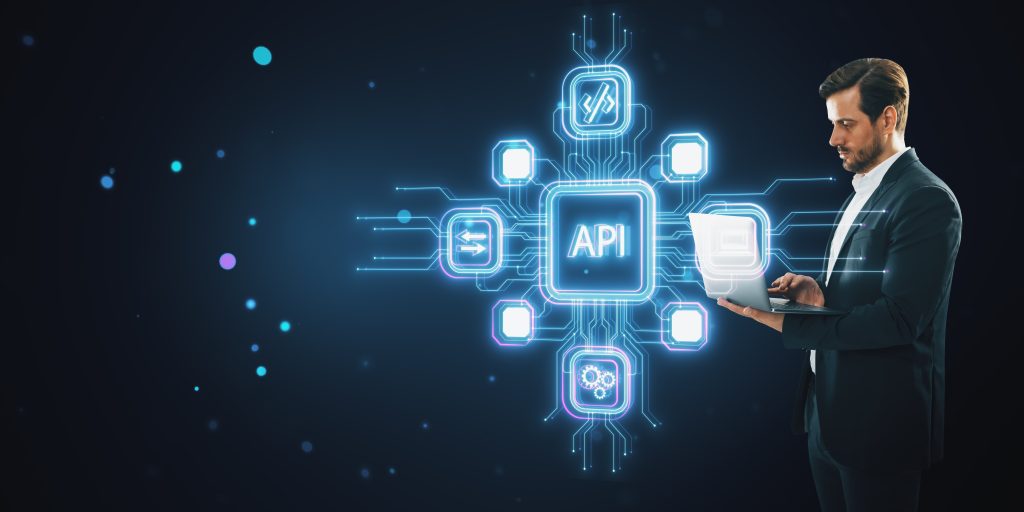
Moreover, these tools are now AI-enhanced, allowing for automated code generation, intelligent suggestions, and instant deployment—all without compromising on scalability or customization.
Examples of impact:
- Startups building MVPs in days instead of months using tools like Bubble, Glide, or Adalo.
- Enterprises automating internal workflows with platforms like Microsoft Power Apps or OutSystems.
- Citizen developers (non-technical professionals) creating apps tailored to specific team needs without IT bottlenecks.
- Seamless integration with services like Zapier, Airtable, and Google Firebase for back-end logic and data handling.
- Augmented and Extended Reality (XR)
Extended Reality (XR)—a collective term that includes Augmented Reality (AR), Virtual Reality (VR), and Mixed Reality (MR)—is reshaping how users interact with digital content by merging the physical and virtual worlds. Once associated mainly with gaming and entertainment, XR has now evolved into a powerful tool for industries ranging from education and healthcare to retail and real estate.
AR overlays digital information onto the real world (think AR filters on Instagram or interactive product try-ons), while VR creates immersive, fully virtual environments (like training simulations or virtual tours). MR, meanwhile, blends both—allowing users to interact with digital objects in the real world in real-time.
Why it matters in 2025:
As XR technologies become more affordable and accessible, they’re becoming essential for enhancing user experience, boosting engagement, and creating memorable brand interactions. In 2025, XR will no longer be a “nice-to-have”—it will be expected, especially in industries that thrive on visualization, personalization, and hands-on interaction.
Key trends to watch:
- AR in e-commerce: Virtual try-ons, furniture placement previews, and interactive product demos.
- VR in healthcare: Immersive therapy sessions, surgical training, and patient education tools.
- MR in education and training: Real-time simulations, skill-building modules, and experiential learning.
- XR in marketing: Branded AR campaigns, virtual showrooms, and location-based experiences.
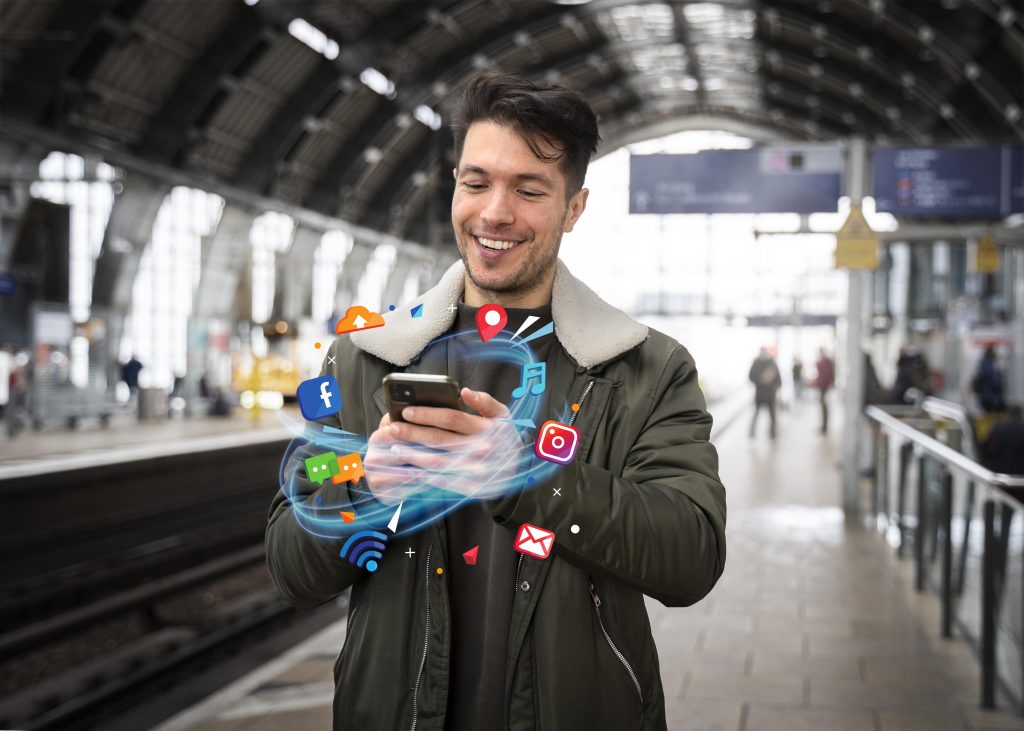
Examples of impact:
- IKEA’s app lets users see how furniture fits into their space.
- Medical apps providing VR simulations for surgical practice.
- Beauty brands using AR to let users virtually apply makeup.
- Real estate apps offering virtual walkthroughs of properties.
Conclusion:
The mobile app ecosystem is evolving at an unprecedented pace—and 2025 is positioned to be a game-changing year. We’re entering an era where users expect apps to be intelligent, intuitive, immersive, and lightning-fast. The convergence of cutting-edge technologies like Artificial Intelligence (AI), Extended Reality (XR), predictive analytics, voice-first interfaces, and 5G connectivity is reshaping not just how apps function, but how they connect with people on a human level.
These aren’t just trends—they represent a fundamental shift in how digital products are designed, developed, and experienced. Users now expect personalization as a default, interactivity as a norm, and innovation as a standard. Apps that fail to evolve with these expectations risk becoming obsolete in a market driven by constant innovation and shifting user behaviors.

For businesses, startups, and product teams, this presents both a challenge and an opportunity. The challenge lies in keeping up with the speed of change. The opportunity lies in embracing these transformative trends early to create standout products that capture attention, build loyalty, and drive revenue.
At vativeApps, we understand the future of mobile is not about adding features—it’s about crafting experiences that anticipate user needs, integrate seamlessly with emerging tech, and scale across devices, platforms, and environments. Whether you’re launching a customer-facing app, reimagining internal workflows, or building a niche digital product, we’re here to help you transform ideas into reality—with speed, creativity, and technical excellence.
Let’s build future-ready apps that don’t just meet expectations—but redefine them.
 OTT App Development
OTT App Development
